GSM devices[]
Help for war-affected Ukrainians https://send.monobank.ua/jar/AKm1xofb1t
GSM for “Global System for Mobile Communications” is a standard used all over the world for wireless communication. It is the only system used practically everywhere and at many places exclusively, but is still competing with different systems (like CDMA) in America and Asia.
GSM-based devices identify the user by a detachable smartcard called SIM (for “Subscriber Identity Module”). This can be taken out of the device and be replaced by a different SIM card issued by another provider. As only GSM-technology gives worldwide coverage and the choice of swapping SIM cards, this WIKI is based on GSM and providers listed are mostly GSM providers.
4G/LTE has been employed by former CDMA-providers too, bridging this gap. They give out GSM- or at least LTE-enabled devices. That's why we have started to list some of these providers like Verizon in the USA too.
Progress has come in generations with GSM. It started with voice transmission, was later added by text (SMS), pictures (MMS) and data (GPRS). As of 2020 four different generations of mobile transmissions are used.
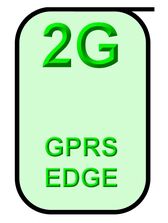
2G (GPRS, EDGE)[]
Modern GSM-technology started with 2G for 2nd generation in the 1990s. It has data rates with a max. of 50 kbit/s called GPRS, later to be accelerated to about 500 kbit/s which is called EDGE.
This is sufficient for the most basic data requirements like messaging, WAP or mobile websites, but too slow for “surfing” desktop websites. Nevertheless, it’s still the backbone of data transmission in rural areas or developing countries where networks are not that advanced.
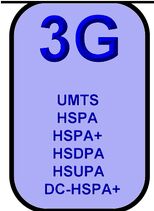
3G (UMTS, HSPA, HSPA+, HSDPA, HSUPS, DC-HSPA+)[]
The 3rd generation or UMTS started with the new millennium and higher data rates. This was soon to be added by technologies like HSPA, HSPA+, HSDPA, HSUPA and dual-carriers (DC-) for even more speed. Thus theoretical speeds of some hundred Mbit/s can be reached coming down to some Mbit/s in practice.
These speeds are fine for “surfing” all kinds of websites and many data needs, but there is growing congestion slowing down the speed and high-volume data like downloads take time or are impossible like video streaming. Not using that, you may feel fine on 2G and 3G which are still the only mobile options in many areas.
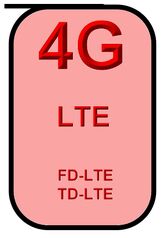
4G (LTE, FDD-LTE, TDD-LTE, LTE Advanced, LTE+)[]
4G has arrived before it was really here. Some operators called their “3.5G” or “3.99G” networks “4G”. In this WIKI only LTE is called 4G not to confuse any further. With the arrival of LTE from around 2010, unprecedented speeds of double or even triple digit Mbit/s can be reached in practice.
LTE has been the state of art of wireless data transmission in the 2010s. High-volume data can be sent or received very fast even topping many landline ADSL-providers. The deployment of LTE networks has been under way worldwide, but costs a lot of money and time. So LTE hasn't reached all areas even in technologically advanced countries and is only starting up in the derveloping countries.
By carrier aggregation of two or more LTE frequencies even higher speeds can be achieved similar to 3G. This is often marketed as LTE Advanced, LTE+ or 4.5G.
5G[]
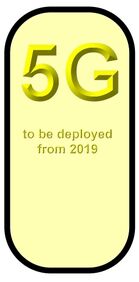
5G is the latest arrival on the market. 5G (short for 5th Generation) has become a commonly used term for advanced wireless systems using 5G NR (5G New Radio) software as 5G to meet the requirements of the ITU IMT-2020. It follows 2G, 3G and 4G and their respective associated technologies.
Higher speeds of 1 Gbit/s and more and shorter latencies can be achieved. As of February 2019, the GSMA identified 201 operators in 83 countries that are actively investing in 5G. The first country to adopt 5G on a large scale was South Korea in April 2019, Switzerland and the US followed. There are only 5 companies offering 5G radio hardware and systems: Huawei, ZTE, Nokia, Samsung, Ericsson, and Apple.
Please see the article 5G for more information about availability.
Unlocked device[]
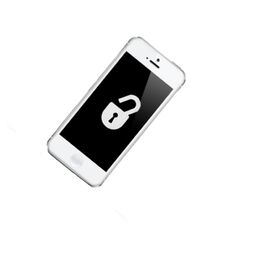
A SIM lock or net lock is the capability built into GSM mobile devices by providers to restrict the use to specific countries and network providers. A device sold without a SIM lock is called unlocked and the owner can insert any SIM card.
It is not uncommon that a phone purchased together with a plan is SIM-locked to that particular provider. This means that when you go abroad and try to use a foreign SIM card it simply will not work.
There are many ways to unlock your device, which can't be specified here. Generally, an unlock code from your provider is available after the initial time of your contract has run out. So take a look around the net or ask your provider or a mobile shop if and how your device can be unlocked.
Internationally, there are very different laws concerning SIM-locks and unlocking. In some countries SIM-locks are prohibited at all, in other countries unlocking of devices (within a certain time) is iilegal. For a survey of the legal situation refer to this: [[1]]
Frequencies[]
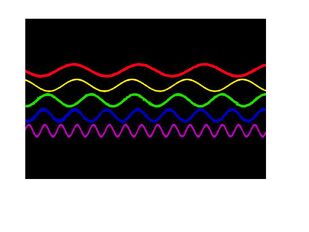
Unfortunately, different frequencies are used all over the world for 2G, 3G and 4G GSM transmissions. To avoid blackouts, check the available frequency bands of the devices you want to take with you while traveling and compare it with the frequencies available in your destination country. They are given in the introduction of each country chapter.
For specifc phone models, their frequencies are listed here: Network Compatibility of common phones. If you can't find your device, check its manual or device specification sites on the internet.
Basically, most of the countries within a region agreed on using certain frequency bands. This doesn't mean that no country differs from its neighbours. But it enables us to make a general survey of the frequencies used worldwide in MHz.
| Region | 2G (MHz) | 3G (MHz) | 4G/LTE (MHz) |
5G (Mhz) |
|---|---|---|---|---|
| Europe | 900, 1800 | (900), 2100 | 800, 1800, 2600 + | 3500 |
| Africa | 900 + | 2100 + | 1800 + | |
| Middle East | 900, 1800 | 900, 2100 | 1800 + | |
| Asia | 900, 1800 (!) | 900, 2100 + | # | 3500 |
| Oceania | 900, 1800 (!) | 850, 900, 2100 | # | |
| North America: US
Mexico, Canada |
850, 1900 | 700, 1700, 1900
850, 1900 + |
700, 1700, 1900 | 3500 |
| Caribbean | 900, 1800 or
850, 1900 |
850, 1900 or
900, 2100 |
700, 1700, 1800 + | |
| Latin America | 850, 1900 or
900, 1800 |
850, 900
1900, 2100 |
700, 1700. 1800,
1900, 2600 |
Remarks: This table above is for orientation only, as there are many local discrepancies.
+ = other frequencies are in use in some countries by specific providers, for LTE see: [[2]]
# = very different LTE frequencies are in use in Asia and Oceania, see: [[3]]
(!) = no 2G/GSM provider in Japan, South Korea, Taiwan, Singapore and Australia
You have to check the capability of your device in 2G, 3G and if applicable 4G seperately, if it works on the right bands. This is especially important coming from or going to America from the rest of the world as there are the biggest incompatibilities. 4G/LTE is being transmitted on more than 30 different frequency bands worldwide nowadays leading to a lot of mismatches.
For more info about the specific frequency bands used in your destination countries, check each Basics section given at the beginning of every country article.
